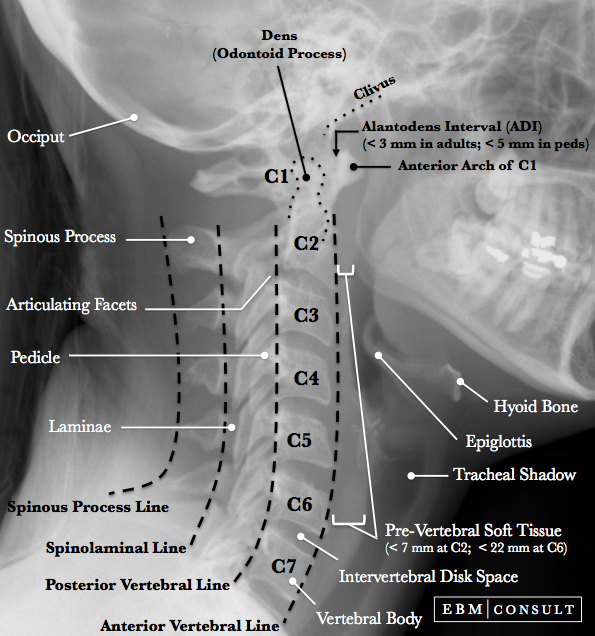Dens (Odontoid) Fractures - General Review
Summary:
-
A
fracture of the odontoid bone (also called the dens), is an upward extension of
C2 cervical vertebrae (i.e., axis) up into the C1 cervical vertebrae (i.e., atlas) and is held in place partially by the alar, apical and transverse
ligaments.
- There are three types of dens fractures with type II being the most common. Types II & III are commonly treated with a halo vest or surgical fixation.
- If starting out with basic radiographs, you would assess by doing an open mouth or odontoid view. If an abnormality is present, a CT or MRI of the head and c-spine can more definitively determine the type of dens fracture.
Dens (Odontoid) Fractures
|
|---|





